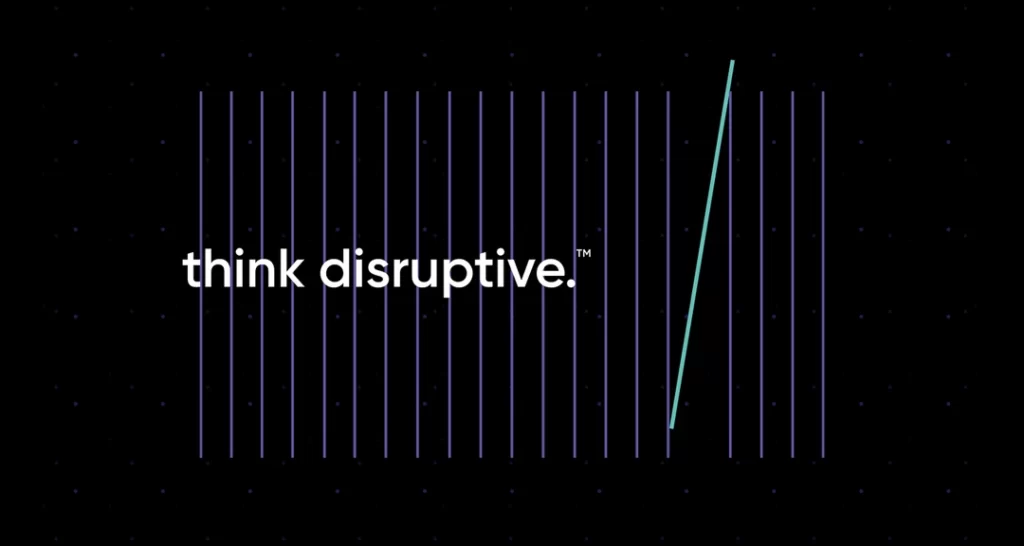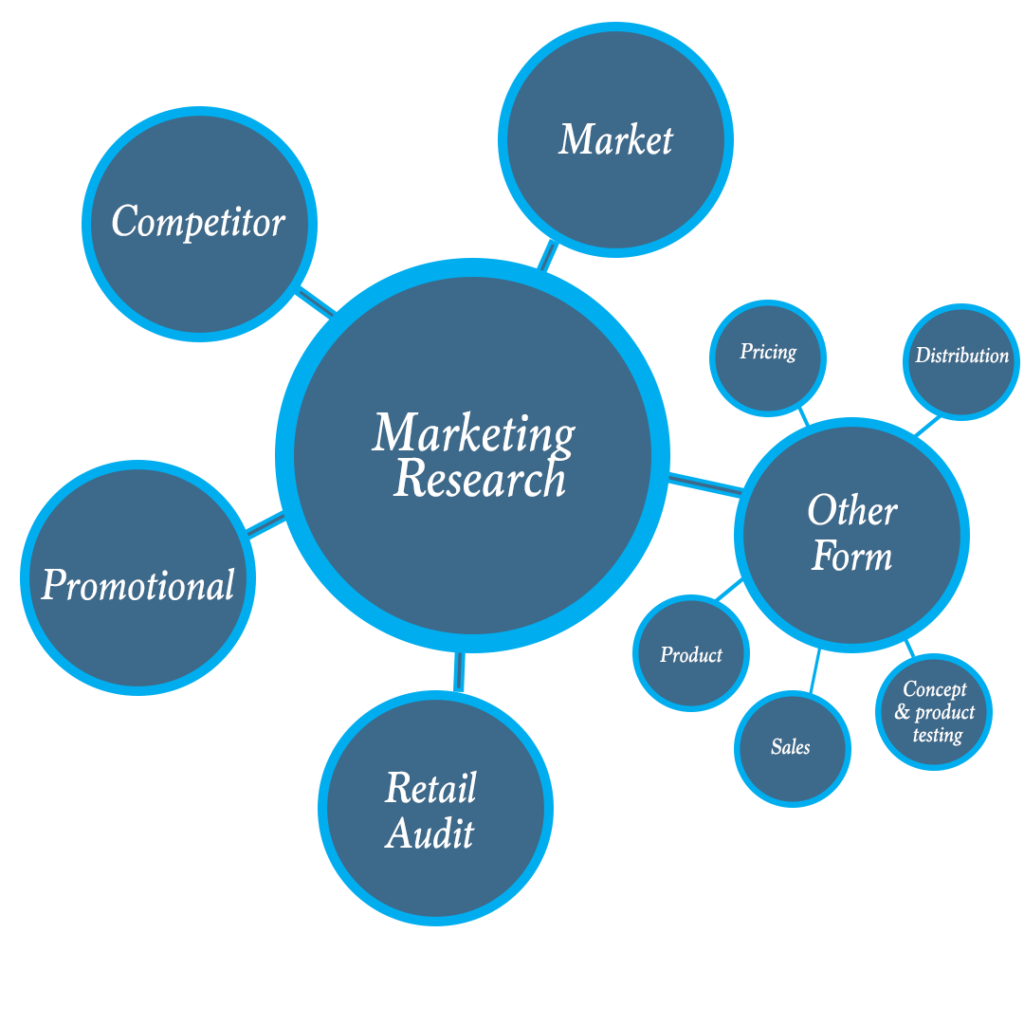Disruptive Marketing: Unleashing Innovation to Dominate the Market
Today, we're diving headfirst into the thrilling world of disruptive marketing and exploring how it can transform how businesses dominate the market. Visualise this: you're a business owner or a marketer, and you want to stand out from the crowd, captivate your audience, and propel your brand to new heights of success. Disruptive marketing might be the secret weapon you've been searching for.
Innovation is the game's name, and disruptive marketing is its player. It's a strategy that shakes up the traditional marketing landscape, challenging the status quo and paving the way for groundbreaking ideas and approaches. It's about ditching those tired, run-of-the-mill tactics and replacing them with fresh, bold, and audacious moves that make your competitors sweat.
But here's the best part: disruptive marketing has been proven to deliver jaw-dropping results. According to recent studies, companies that embrace disruptive marketing see a staggering 20% increase in customer acquisition, a 25% boost in brand loyalty, and an incredible 30% rise in revenue. My friend, these numbers are hard to ignore and testament to the power of thinking outside the box.
So, how does disruptive marketing work its magic? It's all about finding untapped opportunities, identifying pain points in your industry, and fearlessly exploring uncharted territory. Think of it as taking a leap of faith backed by solid market research and a firm belief in your ability to revolutionise your industry. It's about challenging conventions, breaking the mould, and making waves your competitors can only dream of.
You might be thinking, “But isn't disruptive marketing risky?” Well, my friend, every great leap forward comes with risk. But remember, fortune favours the bold! And besides, the rewards far outweigh the risks. By embracing disruptive marketing, you position yourself as an industry leader, an innovator, and a force to be reckoned with. You build a brand that's impossible to ignore, one that inspires loyalty and captivates your target audience.
In the rest of this blog post series, we'll delve deeper into the fascinating world of disruptive marketing. We'll uncover the strategies behind some of the most successful disruptive marketing campaigns and explore how you can apply them to your own business. Enable your creativity, challenge the norm, and revolutionise your marketing game.
So, fasten your seatbelts, my fellow marketers, and join me on this thrilling journey as we explore disruptive marketing and unlock the power of innovation. Together, we'll rewrite the game's rules, leaving our competitors in the dust and paving the way for unprecedented success.
Table of Contents
Understanding Disruptive Marketing

Before we dive deeper, let's define what disruptive marketing is all about. Disruptive marketing is a strategy that goes beyond conventional tactics and aims to shake up the market. It involves challenging existing norms, reinventing industry practices, and creating unique value propositions that set a business apart. Disruptive marketing is not just about catchy slogans or clever advertisements; it's a mindset that fosters innovation, creativity, and a deep understanding of consumer needs and desires.
To succeed in disruptive marketing, businesses must adhere to several fundamental principles. First and foremost, they must embrace innovation and change. The ability to constantly challenge the status quo and seek innovative solutions is essential. Secondly, a customer-centric approach is vital. By putting the customer at the centre of marketing strategies, businesses can understand their pain points and desires, leading to more effective and personalised campaigns.
Agility and adaptability are also crucial in the disruptive marketing realm. Companies must quickly adapt to market shifts and consumer demands, ensuring they stay ahead of the competition. Lastly, disruptive marketing involves exploring unconventional tactics and channels. Breaking away from traditional marketing approaches and venturing into new avenues to reach the target audience can yield remarkable results.
Successful Examples of Disruptive Marketing
To truly grasp the power of disruptive marketing, let's look at some successful examples that have reshaped industries and left a lasting impact.
1. Uber: Transforming the transportation industry
The traditional taxi industry faced numerous challenges, including limited availability, inconsistent service quality, and a lack of transparency. Uber disrupted the market by introducing a convenient, efficient, and transparent ride-hailing service through its innovative mobile app. By connecting passengers directly with drivers, Uber eliminated the need for traditional taxi services and revolutionised transportation as we knew it.
The key factors contributing to Uber's success were its customer-centric approach, seamless user experience, and the utilisation of technology to optimise operations. Uber's disruptive marketing transformed the transportation industry and launched similar ride-hailing services globally.
2. Airbnb: Redefining the hospitality industry
The hospitality industry was dominated by established hotel chains, making it challenging for individual property owners to enter the market. Airbnb disrupted the industry by providing a platform for homeowners to rent out their properties to travellers. This opened up a vast inventory of unique accommodations and offered travellers a more personalised and authentic experience.
Airbnb's innovative model, which emphasised community and trust-building, allowed people to explore new destinations while enjoying the comforts of a home away from home. By tapping into the sharing economy and leveraging the power of user reviews, Airbnb redefined how we travel and challenged the traditional hospitality industry.
3. Dollar Shave Club: Disrupting the razor market
The razor market was long dominated by established brands that often priced their products exorbitantly. Dollar Shave Club disrupted this market by offering high-quality razors at a fraction of the cost through a subscription-based model. They leveraged humour and a direct-to-consumer approach to connect with consumers, highlighting the overpriced nature of traditional razor brands.
Dollar Shave Club's disruptive marketing campaign, featuring witty videos that went viral, garnered immense attention and customer loyalty. They successfully disrupted the razor market by challenging the idea that shaving should be expensive and building a strong brand following.
Harnessing Disruptive Marketing Strategies
Now that we understand the essence of disruptive marketing let's explore how businesses can effectively harness its power to their advantage.
A. Conducting market research

Market research plays a pivotal role in today's dynamic business landscape, as it enables organisations to uncover industry pain points, identify unmet needs, and stay on top of emerging trends. By delving deep into the preferences and behaviours of their target audience, businesses can craft disruptive marketing strategies that effectively resonate with their customers. To accomplish this, it is essential to leverage various research methods and tools, such as surveys, focus groups, and social listening.
One of the primary objectives of market research is to understand the pain points experienced by consumers within a specific industry. By gathering data and insights on customers' challenges and frustrations, businesses can identify opportunities for innovation and improvement. Whether it's a cumbersome process, a lack of convenience, or an inefficient product or service, these pain points provide valuable information that can be used to create solutions that address customer needs effectively.
Moreover, market research helps businesses uncover unmet needs in the market. By carefully analysing consumer behaviour, preferences, and desires, organisations can identify gaps in the current offerings and develop products or services that cater to those unfulfilled demands. This proactive approach enables businesses to differentiate themselves from the competition and gain a competitive edge by providing unique and compelling solutions that customers seek.
Keeping a pulse on emerging trends is another critical aspect of market research. By monitoring industry developments, consumer behaviour shifts, and technological advancements, businesses can anticipate future demands and adapt their strategies accordingly. This foresight enables organisations to stay ahead of the curve and position themselves as industry leaders, driving innovation and capturing new market opportunities.
Businesses employ various research methods and tools to gather the necessary insights for informed decision-making. Surveys are a popular technique for collecting data directly from consumers, enabling organisations to gather quantitative information on their preferences, opinions, and purchasing behaviour. Businesses can extract valuable insights that guide product development, pricing strategies, and marketing campaigns through well-designed surveys.
Focus groups offer another avenue for gathering in-depth qualitative feedback from a diverse set of consumers. These moderated group discussions allow participants to express their thoughts, experiences, and preferences, giving businesses rich, nuanced insights. By engaging directly with their target audience in a controlled environment, organisations can better understand the emotional drivers and motivations behind consumer behaviour.
In today's digital age, social listening tools have become invaluable for capturing real-time consumer sentiment and monitoring online conversations. Businesses can uncover valuable insights into how their brand is perceived, track customer feedback, and identify emerging trends or issues by analysing social media platforms, review sites, and online forums. Social listening provides a powerful way to stay connected with customers and respond promptly to their needs, fostering brand loyalty and enhancing customer satisfaction.
B. Building a culture of innovation

To cultivate disruptive marketing strategies, businesses must establish an environment that fosters creativity and encourages out-of-the-box thinking. By empowering employees to contribute their ideas and experiment with new approaches, organisations can unlock untapped potential and propel themselves ahead of the competition. Furthermore, investing in research and development becomes imperative to maintain a position at the forefront of innovation within the industry.
One of the key elements to fostering disruptive marketing is creating an environment that nurtures creativity. This entails allowing employees to think beyond conventional boundaries and encouraging them to explore new ideas without fear of failure. By fostering a culture that values and rewards innovation, businesses can create an atmosphere that stimulates the creative thinking necessary for disruptive marketing.
Empowering employees to contribute their ideas is crucial for generating innovative marketing strategies. When employees feel valued and their opinions are considered, they become more engaged and motivated to contribute to the organisation's success. Encouraging cross-functional collaboration and establishing channels for open communication allows for the free flow of ideas and facilitates the identification of unique marketing opportunities. Additionally, providing platforms for idea sharing and implementing feedback mechanisms can amplify creativity and generate a sense of ownership among employees.
To truly embrace disruptive marketing, organisations must be willing to embrace experimentation. Encouraging employees to test new approaches and take calculated risks allows for discovering groundbreaking strategies that can redefine the industry. This requires creating a safe space for employees to challenge existing norms and traditional practices. By embracing a mindset of continuous improvement and learning from failures, businesses can adapt and iterate their marketing approaches to stay ahead of the curve.
Investing in research and development is an essential component of fostering disruptive marketing. By allocating resources to explore emerging technologies, market trends, and consumer behaviours, organisations can identify new opportunities and capitalise on them. Research and development efforts keep businesses informed about the latest innovations within their industry and provide a platform for generating breakthrough ideas that can revolutionise their marketing strategies. Businesses are leaders and pioneers by actively engaging in R&D, driving industry-wide change rather than simply reacting to it.
C. Leveraging technology and data

In today's fast-paced digital age, technology has emerged as a powerful force in marketing, completely revolutionising traditional approaches. With the advent of digital transformation, businesses have an incredible opportunity to harness the potential of data analytics and artificial intelligence (AI) to unlock valuable customer insights and drive impactful marketing strategies. By embracing these transformative tools, companies can stay ahead of the competition and forge meaningful connections with their target audience.
One of the critical pillars of modern marketing is data analytics. With the vast amounts of data available at our fingertips, businesses must gather, analyse, and interpret this information to make informed decisions. Through comprehensive data analysis, marketers can deeply understand customer behaviour, preferences, and trends. By leveraging this knowledge, companies can tailor their marketing efforts to target specific customer segments, increasing the effectiveness and efficiency of their campaigns.
In conjunction with data analytics, the power of AI is instrumental in unlocking the full potential of marketing strategies. AI algorithms can rapidly process and analyse vast data, providing marketers with valuable real-time insights. This enables businesses to make timely and accurate decisions, optimise their marketing efforts, and enhance overall customer experiences.
Moreover, personalisation has become a critical aspect of successful marketing campaigns. Businesses can create highly personalised and targeted marketing campaigns that resonate deeply with their audience by leveraging the data and insights gathered through data analytics and AI. Personalisation goes beyond simply addressing customers by name; it involves tailoring content, offers, and experiences based on individual preferences, behaviours, and purchase history. This customisation level enhances customer engagement and increases the likelihood of conversions and long-term customer loyalty.
D. Collaboration and partnerships

Harnessing the power of collaboration with complementary businesses can significantly enhance the impact of your disruptive marketing strategies. You can create a powerful synergy that drives mutual growth and success by identifying potential partners who align with your vision and share similar values. Collaborative efforts enable you to tap into new markets, access a broader customer base, and amplify your brand's reach.
In addition to partnering with like-minded businesses, leveraging influencers and brand ambassadors can significantly expand your brand's visibility and establish credibility within your target market. These influential individuals possess the ability to sway opinions and shape consumer behaviour, making them valuable allies in your marketing endeavours. By strategically collaborating with relevant influencers and brand ambassadors, you can effectively reach a larger audience, create authentic connections, and gain the trust of potential customers.
However, collaboration continues after external partnerships. Embracing the concept of co-creation with your customers takes teamwork to the next level. Involving your customers in product development or seeking their input during campaign ideation fosters a sense of ownership and loyalty. By actively engaging customers and allowing them to have a say in shaping your offerings, you create a more personalised experience and build a community of brand advocates who feel valued and appreciated.
To successfully implement co-creation, you can utilise various methods such as surveys, focus groups, or online platforms that encourage customer feedback and participation. By actively listening to your customer's needs, preferences, and ideas, you gain valuable insights that can inform your marketing strategies and lead to developing products and campaigns that resonate deeply with your target audience.
Overcoming Challenges in Disruptive Marketing

While disruptive marketing holds immense potential, it has its challenges. Here are a few obstacles businesses may encounter and strategies to overcome them.
A. Resistance to change
Change can be met with resistance, both internally within organisations and externally from customers. To overcome this, it's crucial to communicate the benefits of disruptive marketing and involve stakeholders early on. Effective change management strategies can ease the transition and gain all parties' buy-in.
B. Competition and imitation
When a disruptive marketing strategy proves successful, competitors may quickly catch up and imitate your approach. Continuous innovation becomes essential to maintaining a competitive edge. Stay ahead by consistently evolving your strategies, exploring new opportunities, and delighting your customers with fresh experiences.
C. Managing risk and uncertainty
Disruptive marketing often involves taking calculated risks. It's essential to strike a balance between innovation and business sustainability. Conduct thorough market research and gather insights to minimise risks. Test and iterate on your strategies to gauge their effectiveness before scaling up.
The Future of Disruptive Marketing

As we look to the future, disruptive marketing will continue to shape the business landscape remarkably. Technological advancements will play a significant role in driving innovation and transforming consumer experiences.
A. Technological advancements and their impact on marketing
Artificial Intelligence (AI) and automation will revolutionise marketing by enabling more personalised and efficient customer interactions. Virtual reality (VR) and augmented reality (AR) will offer immersive experiences that bridge the gap between the physical and digital worlds. Voice-activated technologies and smart devices will further reshape how consumers interact with brands.
B. Evolution of consumer behaviour and expectations
Consumer behaviour and preferences are continually evolving. Businesses must adapt to shifting demographics and cater to the demand for personalised, authentic, and sustainable experiences. Social responsibility and sustainability will play increasingly vital roles in consumer decision-making processes.
C. The role of disruptive marketing in the digital age
Disruptive marketing will be inseparable from digital transformation. To thrive in the digital age, businesses must integrate disruptive marketing strategies with omnichannel approaches. Seamlessly connecting online and offline experiences will be crucial to engage customers throughout their journey.
Conclusion
In a world where differentiation is vital, disruptive marketing allows businesses to transcend industry norms, redefine success, and dominate the market. By embracing innovation, adopting a customer-centric approach, and exploring unconventional tactics, companies can position themselves as industry leaders and capture significant market share. However, leveraging the power of disruptive marketing requires a mindset that embraces change, a commitment to continuous innovation, and a willingness to take calculated risks.
As technology advances and consumer expectations evolve, disruptive marketing will remain a driving force behind business transformation. So, are you ready to disrupt the market, revolutionise your industry, and unleash innovation? The choice is yours. Embrace the power of disruptive marketing and shape the future of your business today.
